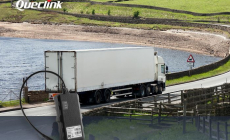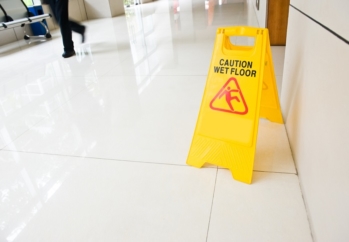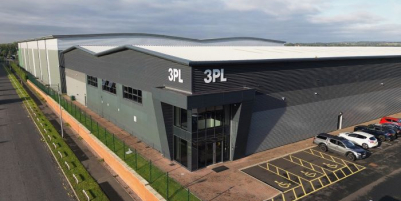-
Women Leading the Way in the UK Material Handling Industry - 2 days ago
-
DATA ANALYSIS – THE FOUNDATION OF EVERY PEAK SEASON - December 5, 2025
-
Creative education specialists Creative Hut give 3PL full marks for onboarding excellence - December 5, 2025
-
Unlimited Industries raises $12M to build the AI construction company that will power America’s future - December 4, 2025
-
Etaily lands strategic investment from Japan’s SMBC – bringing total funding to $24M for Social Commerce enablement platform - December 4, 2025
-
Prism eLogistics and Brand Angels Partnership Gives Brands the Full Package - December 3, 2025
-
New data shows Tesla in danger of losing its way as European consideration to buy Chinese cars jumps 16% in 12 months - December 3, 2025
-
QUECLINK DEVELOPS SATELLITE-ENABLED VEHICLE TRACKING FOR UNINTERRUPTED TRANSPORT MANAGEMENT - December 3, 2025
-
Ocado Ads partners with Epsilon for people-based precision - December 3, 2025
-
Combilift Unveils the 2025 Christmas video “Twelve Days of Christmas” – with a Twist! - December 1, 2025
by Chris Macwilliam, Partner and Head of Personal Injury, Clough & Willis Solicitors
All businesses in the UK have a legal responsibility to prevent accidents and protect people in their workplaces from injury. Despite this, accidents are still all too common, and data from the Health and Safety Executive (HSE) shows that slips, trips and falls were the most common non-fatal injuries reported in 2021/22. In fact, of the 61,713 accidents reported by employers under their Reporting of Injuries, Diseases and Dangerous Occurrences Regulations (RIDDOR) obligations, some 30% were slips, trips or falls – representing around 18,500 incidents.
Outside of RIDDOR, the number of self-reported injuries reached 565,000 in HSE’s 2021/22 survey, suggesting that the real number of slips and trips could be much higher. While the data only accounts for non-fatal accidents, this does not mean that this is not a serious problem – even minor accidents can result in fractures, cuts and other injuries, and the HSE report estimates that six million working days were lost to injuries in 2021/22.
As we have said, employers have a responsibility to recognise and mitigate the risk of slips, trips and falls. Here, the personal injury experts at Clough & Willis Solicitors explain how warehouses and logistics businesses can ensure that they meet their legal obligations to prevent accidents, and what employees can do if they are injured in an accident at a workplace.
How can businesses prevent slips, trips and falls?
Businesses should apply a standard approach to identifying and mitigating the risk of accidents. While slips and falls are by far the most common type of accident, this advice is relevant and will help organisations prevent a wide variety of injuries if this approach is applied across the board.
Your first step should be to perform a thorough risk assessment. Consider the work you do and the risk factors that could cause someone to slip or trip in your workplace. For example:
- Do you work with liquids or substances that could spill and create a slippery surface?
- Is there a suitable place for you to store equipment, away from doors and pedestrian areas?
- Have you put procedures in place to keep walkways clear?
- Are there uneven surfaces that you need to repair or cover?
While carrying out your risk assessment, you should review your obligations to health and safety regulations. Wet floors and slippery surfaces must be clearly indicated – do you have enough wet floor signs for this purpose? Do members of staff know when they should put these signs on display?
Alongside these questions, which are practical considerations for every business with a physical workplace, there may be specific concerns that affect your industry more than others. In fact, many of the most dangerous industries are subject to specific HSE requirements. For example, a spillage could have worse consequences than making the floor slippery if your business works with hazardous substances, and any organisations that work with these substances must meet the additional requirements of COSHH – HSE’s Control of Substances Hazardous to Health regulations.
Once you have identified the risks and your responsibilities to address them, you can begin implementing any measures that are necessary to keep employees safe. There are a number of other types that are particularly common in warehouses, such as lifting and carrying injuries, and collisions with moving objects (including vehicles like forklift trucks). As well as posing a high risk in warehouse settings, these accidents are the second and third most common in all UK industries, according to HSE’s report, representing 18% and 11% of the total number of accidents, respectively. As such, you should also consider the factors that could cause these accidents and work to prevent them.
What should employees do?
It is also vital for employees to understand their legal responsibilities, which include following the instructions their employer provides and staying aware of risk factors like wet floors wherever possible. If a slippery surface is suitably indicated by a sign and you slip, this will be considered your responsibility for failing to heed the warning.
On the other hand, if your employer has been negligent in their duties to keep you safe – by failing to undertake a risk assessment, display ‘wet floor’ signs, or in any other way- and you are injured as a result, you may be eligible to claim compensation. This will account for any pain and suffering you experienced as a result of your injury, prevent you from losing money if you need to take time off work to recover, and incentivise your employer to take whatever steps are necessary to prevent future accidents of the same nature.
If you sustain an injury, your first priority should be to seek medical attention. A doctor will diagnose your injury, and may be able to identify underlying or hidden symptoms that could later develop into more serious conditions. Your medical report will also support a compensation claim. Following this, you should gather evidence – including photographs of the scene of the accident, and contact details for any eyewitnesses – and report the accident to your employer so that it can be recorded in your workplace’s accident book.
Finally, speak to an expert personal injury solicitor about the circumstances of the incident. They will be able to advise you as to whether you have the option to make a claim, estimate how much money you could be awarded, and get the process started if you wish to move ahead.
It is only by raising awareness of certain risks that we can encourage workplaces to act responsibly and prevent accidents. If everyone understands their responsibilities – whether you work in a high-risk environment or not – we can all ensure that the number of accidents is brought to an absolute minimum.

































